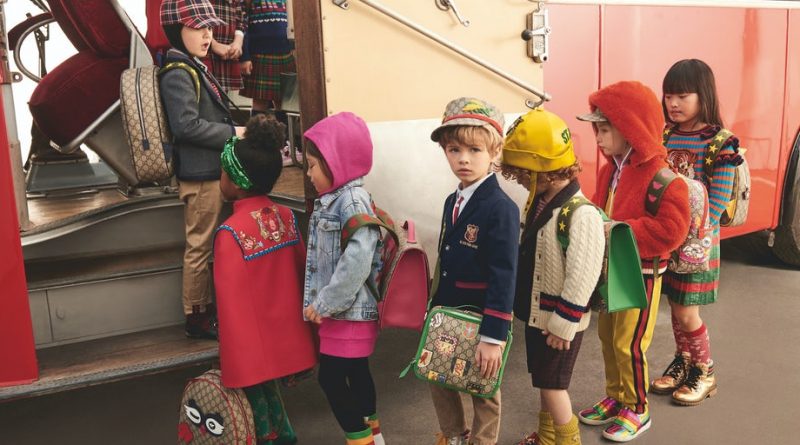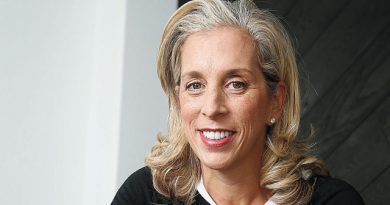Fashion’s Back-to-School Blues | BoF Professional, The Week Ahead
THE CHEAT SHEET
A Back-to-School Shopping Season Like No Other
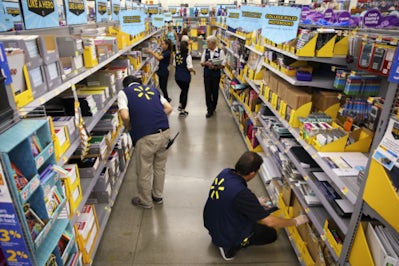
Employees restock shelves of school supplies at a Walmart in Burbank, Calif. | Source: Getty Images/Patrick T. Fallon/Bloomberg
- Schools will hold a mix of virtual and in-person classes this fall, with details yet to be determined in many districts
- US households will spend less on children’s clothing this summer than last year, according to the National Retail Federation
- Brands introduced 46 percent fewer children’s apparel items between May and mid-July, according to Edited
It’s going to be a record back-to-school shopping season, but fashion will be left out of the party. Parents are expected to spend hundreds of dollars on laptops, tablets and other remote-learning gear, according to the National Retail Federation. Clothing, however, is one of the few categories projected to decline, with the average household spending $234 compared with $240 in 2019, according to the NRF. Brands saw this coming months ago, but most had already ordered their back-to-school collections before the pandemic hit.
Much like with adults, brands are pivoting marketing toward comfortable clothes best suited for homeschooling. They face an uphill battle attracting shoppers at all; a Piper Sandler survey of American parents found one-third plan to spend less on back-to-school clothes. The bank also predicts parents will consolidate shopping to make as few trips to stores as possible, which could mean buying more clothes at Walmart, rather than the mall — or simply shopping online only.
The Bottom Line: Back to school is an important sales driver in its own right, but this year it will also serve as a dry run for Black Friday. Brands are still honing their discounting strategies, and figuring out how to turn in-store shopping holidays into physical-digital hybrid events.
Retailers Are Going to Miss Those Stimulus Checks
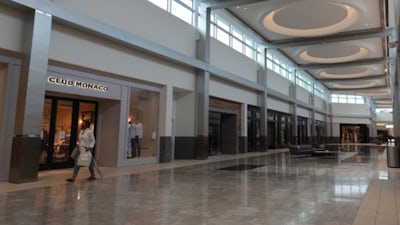
Retailers may see fewer shoppers if US government stimulus isn’t renewed | Source: Getty
- US government aid for those who lost their jobs during the pandemic ran out on July 31
- Economists credit the $600-a-week checks with keeping consumer spending from collapsing
- US unemployment data for July will be published Aug. 7; after early signs of recovery, the number of new unemployment application has started rising
The fashion industry’s trajectory for the rest of 2020 could be determined this week, as lawmakers in Washington negotiate another round of economic stimulus. Retailers are no doubt hoping for some targeted assistance. But the real differentiator will be how much cash the government agrees to send to individual citizens. The $1,200 stimulus checks and $600-a-week unemployment assistance was essential to keeping consumer-facing businesses afloat over the last few months. That money has run out, and if Congress can’t agree on next steps, many fear the bottom will fall out of the US economy. Even if the stimulus is renewed at half of the current level, retailers could see sales drop an additional 3 percent in August, according to Cowen.
The Bottom Line: For all the talk of strategic markdowns and new product lines, the fate of many fashion brands will ultimately be decided in Washington.
American Fashion Gives a Pandemic Update
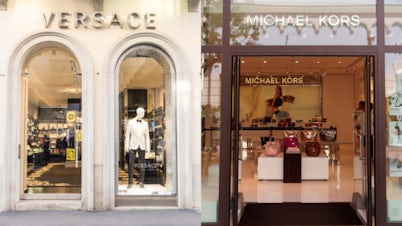
Versace and Michael Kors are both owned by Capri Holdings, which reports quarterly results this week | Source: Shutterstock
- Versace and Michael Kors-owner Capri Holdings, as well as Ralph Lauren, post quarterly financial results this week, covering the peak of the lockdowns
- Ralph Lauren shares are down abouty 40 percent this year, while Capri shares are down 60 percent
- European luxury brands reported steeper-than-expected drops in sales and profits last week
The pandemic has not spared even the strongest luxury brands, and it’s been particularly brutal for those with problems that predate Covid-19. Ralph Lauren, Capri’s Michael Kors and Tapestry‘s Coach and Kate Spade New York are all in mid-turnaround, seeking to position their brands squarely in the luxury space and become less dependent on off-price channels and fading department stores. None of these labels was anywhere close to where they needed to be when the lockdowns hit.
This week’s financial results are likely to reflect a brutal reality for brands that rely heavily on department stores and discount channels to drive sales. They will need to show they can adapt their strategies to fit a changed retail landscape, one where China and e-commerce are more important than ever. Their resolve to pull back on discounting is also being tested as unsold spring inventory piles up. A Bernstein analysis of WGSN data found that at one point in June, 90 percent of merchandise on Michael Kors’ website was on sale, and recently the average discount passed 40 percent.
The Bottom Line: Executives will need to make the case this week that the outlook for American fashion isn’t as bleak as it appears at first glance. There are bright spots for all of these brands, from strong e-commerce traffic to better-than-expected sales in newly reopened US stores (though some have since closed again as new coronavirus cases surge).
SUNDAY READING
Professional Exclusives You May Have Missed:
The Week Ahead wants to hear from you! Send tips, suggestions, complaints and compliments to [email protected].
Was this BoF Professional email forwarded to you? Join BoF Professional to get access to the exclusive insight and analysis that keeps you ahead of the competition. Subscribe to BoF Professional here.

